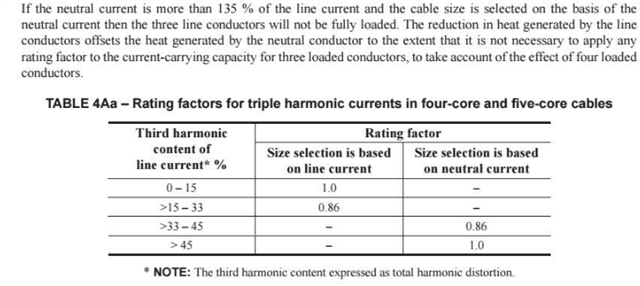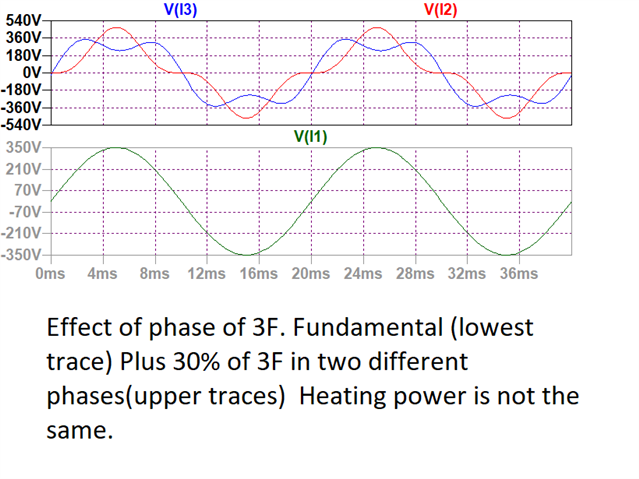Can someone advise where the first formula in case 2 in section 5.5.2 in appendix 4 springs from. The one where Ibh=the root of 1squared plus 0.2 squared? I thought current in the line due to harmonics was accounted for by applying the 0.86 from the table referred to.

 is aimed at those wanting a simple life and includes both line and neutral wire heating.
is aimed at those wanting a simple life and includes both line and neutral wire heating.